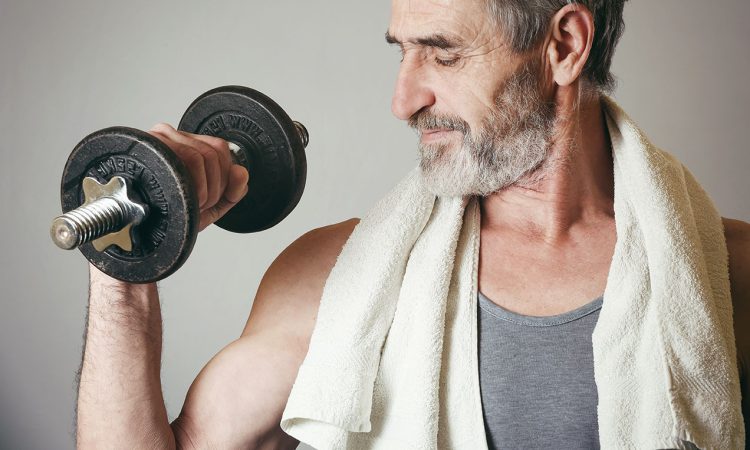In this month of prostate cancer awareness, let us take a few minutes to talk about the health of men as they age. We will not go into detail on prostate health, since this was already covered in a recent article.
Men are often considered to have no equivalent to menopause. It’s true, it’s not the same, and men have far fewer symptoms related to hormonal changes from aging. These changes are less pronounced and are very gradual. Can we talk about andropause? For some men yes, but the term is badly chosen. We talk about andropause as we talk about menopause for women, but there is no physiological process in men that causes a drastic and compulsory change in hormone production, as is the case for women (the end of egg production). We should speak instead of age-related testosterone deficiency. Some men will even reach old age with high testosterone levels. But what causes men’s hormonal changes?
Robustness for the defense of the species
An interesting theory about the difference in longevity between men and women is based on the role of the man as the protector of the family. He is stronger, more corpulent and plays a defensive role (at least in human evolution, in the time of cavemen). The faster and greater development of muscle mass requires higher levels of growth hormones and the presence of testosterone. Since these are the same growth mechanisms that create primary aging later in our lives, humans would age slightly faster. This would explain a few years less life expectancy than that of women.
This development of muscle mass, which requires the production of testosterone, would also be necessary for its maintenance as we age. Men must therefore continue to stimulate the production of muscle mass to maintain testosterone production levels. Studies have shown that high intensity interval training exercises (physically demanding exercises over short repeated periods) increase the production of testosterone.
Muscle loss
Thus, by fighting muscle loss through physical activity against resistance, it is possible to increase the production of testosterone, which promotes the production of muscle mass. A recent meta-analysis (study based on several previously published studies) concluded that in 79% of studies, physical activity increases muscle mass in people aged 65 and over (Beaudart et al, 2017). For men’s health, stimulating muscle growth would be very important in maintaining hormonal balances.
Strength, reproduction and rest
I like to remember, when someone talks to me about retiring, that one of the great laws of biology is that what is no longer used disappears. For humans, a lack of stimulation of the need for testosterone creates a decrease in production. Two main processes require the presence of testosterone: muscle mass and reproduction. It is therefore important to stimulate the production of muscle mass and to remain sexually active (which also reduces the risk of prostate cancer).
A last important point to consider for hormonal balances is the quality of sleep. This is as true for women as it is for men. Sleep cycles allow the body to synchronize all biological processes of repair and hormone production. This is called the circadian cycle.
So ladies, force them to stay strong, keep them sexually active and let them sleep.
References:
- Beaudart et al, 2017. Nutrition and physical activity in the prevention and treatment of sarcopenia: systematic review. Osteoporos Int. 2017 Jun;28(6):1817-1833.
- Hayes et al, 2017. Exercise training improves free testosterone in lifelong sedentary aging men. Endocr Connect. 2017 Jul;6(5):306-310.
- Herbert et al, 2017. HIIT produces increases in muscle power and free testosterone in male masters athletes. Endocr Connect. 2017 Aug 9;6(7):430-436.






